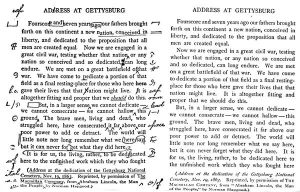11 What is Proofreading?
Proofreading is the final step before submitting an essay or other written assignment. It happens after a writer has revised their work to develop or change any content or structure. Proofreading isn’t “writing: it means checking for grammar, spelling, and formatting errors in a written text.
Interesting fact: Proofreading comes from “galley proofs”: the loose pages of a book that an author, editor, and publisher uses for a final check before publishing.

Proofreading steps:
- Complete your draft, and revised draft, before you start proofreading. Proofreading should be the penultimate step in your writing process, just before you submit your assignment to Canvas.
- Set your draft aside: it is difficult to start proofing when you finish revising. You want to mentally change your focus from rewriting content to reading to catch technical errors. Wait a day, or at least an hour, between revising and beginning to proofread.
- Run your entire draft through Grammarly. This is a free, safe add-on which every writer should have on their computer system. Your professors use Grammarly, as well as published authors.
- Link to Grammarly: https://www.grammarly.com/
- Grammarly will catch MOST of your grammar and style errors, but you will need to check each suggested correction. Grammarly, and all error-checkers, work using an algorithm of English rules and words, but it doesn’t really “read” your essay. Just like a spellchecker will not catch homonyms like to/too/two, a grammar checker will not recognize some common uses of language.
- Most writers develop an idea of which proofreading mistakes they need to look for, so keep these errors in mind. For instance, writers who “write like they talk” will make run-on sentences; writers who are explaining something they are unfamiliar with are more likely to make incomplete sentence fragments; and writers using an outside source for quotes and supporting evidence tend to make more comma splice errors. Keep an eye out for these errors.
- It can be very useful to listen to someone read your paragraphs aloud. You will catch language errors more easily if you hear your words and sentences read out loud.
Don’t skip proofreading: you will spend hours working on your writing assignments, including reading, researching, and drafting, but your instructor will assess the finished product that you submit. Present a professional, polished text so that your reader is not distracted by format or grammar errors. You want your reader to focus on your ideas.
